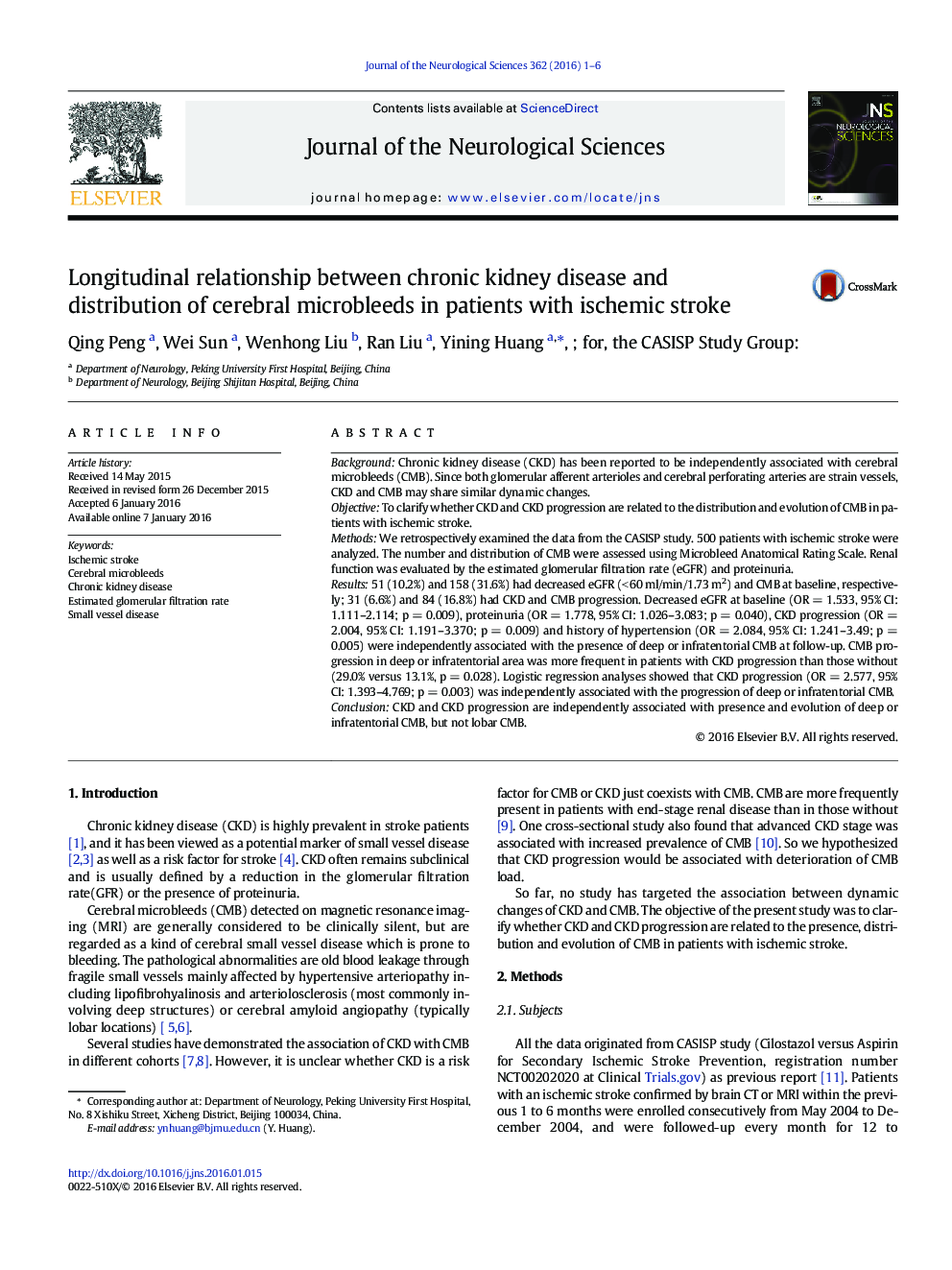| کد مقاله | کد نشریه | سال انتشار | مقاله انگلیسی | نسخه تمام متن |
|---|---|---|---|---|
| 1913033 | 1535100 | 2016 | 6 صفحه PDF | دانلود رایگان |
• Chronic kidney disease was reported to be associated with cerebral microbleeds.
• Renal and brain have similar anatomical and functional features of supplying arteries.
• They may share similar dynamic changes due to susceptibilities to vascular damage.
• Progression of chronic kidney disease may have relationship with cerebral microbleeds evolution.
BackgroundChronic kidney disease (CKD) has been reported to be independently associated with cerebral microbleeds (CMB). Since both glomerular afferent arterioles and cerebral perforating arteries are strain vessels, CKD and CMB may share similar dynamic changes.ObjectiveTo clarify whether CKD and CKD progression are related to the distribution and evolution of CMB in patients with ischemic stroke.MethodsWe retrospectively examined the data from the CASISP study. 500 patients with ischemic stroke were analyzed. The number and distribution of CMB were assessed using Microbleed Anatomical Rating Scale. Renal function was evaluated by the estimated glomerular filtration rate (eGFR) and proteinuria.Results51 (10.2%) and 158 (31.6%) had decreased eGFR (< 60 ml/min/1.73 m2) and CMB at baseline, respectively; 31 (6.6%) and 84 (16.8%) had CKD and CMB progression. Decreased eGFR at baseline (OR = 1.533, 95% CI: 1.111–2.114; p = 0.009), proteinuria (OR = 1.778, 95% CI: 1.026–3.083; p = 0.040), CKD progression (OR = 2.004, 95% CI: 1.191–3.370; p = 0.009) and history of hypertension (OR = 2.084, 95% CI: 1.241–3.49; p = 0.005) were independently associated with the presence of deep or infratentorial CMB at follow-up. CMB progression in deep or infratentorial area was more frequent in patients with CKD progression than those without (29.0% versus 13.1%, p = 0.028). Logistic regression analyses showed that CKD progression (OR = 2.577, 95% CI: 1.393–4.769; p = 0.003) was independently associated with the progression of deep or infratentorial CMB.ConclusionCKD and CKD progression are independently associated with presence and evolution of deep or infratentorial CMB, but not lobar CMB.
Journal: Journal of the Neurological Sciences - Volume 362, 15 March 2016, Pages 1–6
